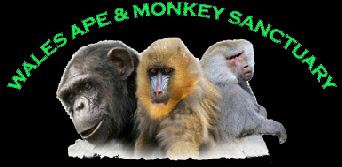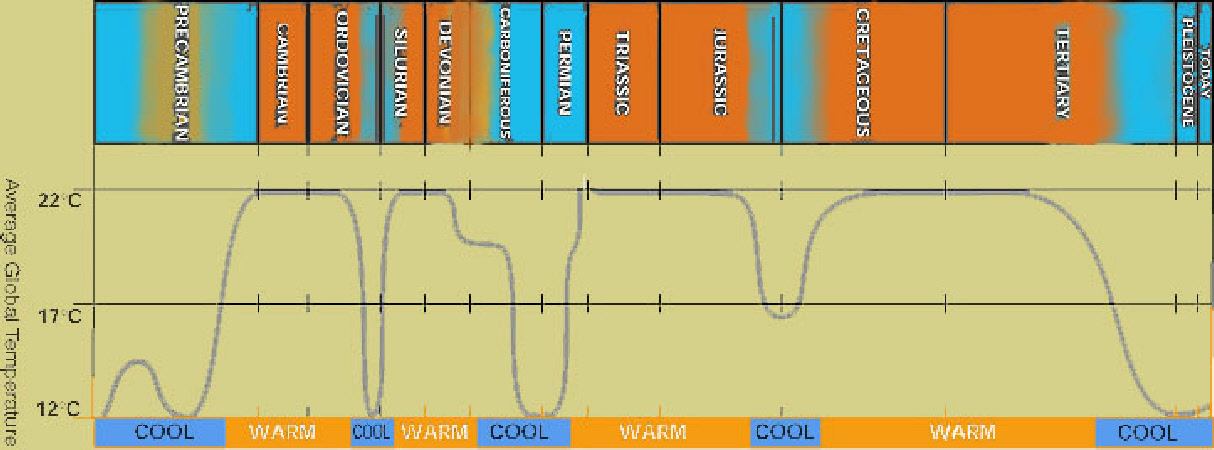
Average global temperatures over the past 500 million years

The temperature record of the past 500 million years has been constructed from a number of indicators including fossil evidence, pollen grains, ice cores, carbon records and other temperature related artefacts. There have been at least five ice ages, or long periods during each of which glaciation would have extended a number of times into lower latitudes, with the latest one peaking around 12,000 years ago. We are now in an “inter-glacial period” and if the pattern of heating and cooling cycles of the past continues to repeat itself then we can expect to begin moving towards another glaciation event anytime within the next 10,000 years.
Ice ages may occur for a number of reasons. These include variations in the Sun’s output, volcanic dust or dust from meteor impacts entering the atmosphere and blocking the suns rays, more cloud cover reflecting the Sun’s energy back into space, changes in ocean currents, and tectonic movement of the continents blocking the transfer of heat from the equator to the poles. Studying the movements of continents over geological time has shown that any one, or any combination, of three configurations can bring on an ice age. These configurations are...
(1) A continent sitting atop one of the poles, such as Antarctica does today.
(2) A polar sea becoming land-locked, as the Antarctic Ocean is today.
(3) A super- continent straddling the equator, as Rodinia, Pangea and Gondwana did in the past.
Of course there are also events that cause warming of the Earth and these can end an ice age and cause temperatures to remain high for millions of years. Warming events include massive emissions of carbon dioxide and other greenhouse gases from forest fires and volcanoes, the release of large amounts of methane from decaying plant matter or previously frozen deposits beneath the sea, increases in the Sun’s energy output, less cloud cover, and in more recent times human activities such as intensive farming, transport and industrialisation.
Both cooling and warming trends can be accelerated by “feedback” effects. An example of this on the cooling side is that as more ice forms more of the sun’s energy is reflected back into space, causing even more cooling. Conversely, on the warming side, as ice melts, exposing the darker sea and land surfaces, more of the Sun’s energy is absorbed. This accelerates global warming. These feedback effects illustrate the environmental dangers created when a “tipping point” is reached and runaway changes occur. The trend still continues, regardless of the fact that the initial cause may no longer be present. Such events undoubtedly caused the mass extinctions of the past and we now know that they can occur far too quickly for many life forms to evolve and adapt to the new conditions. It used to be thought that significant environmental change occurred slowly but we now have evidence that rapid changes have occurred in the past and no doubt will again.
